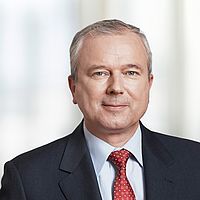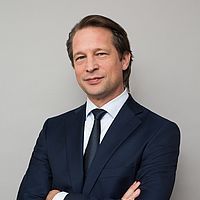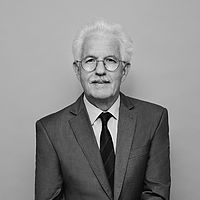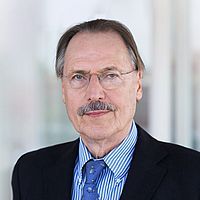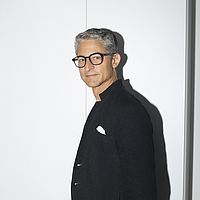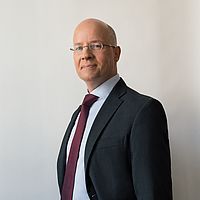IP Report 2010/V
Patent Law
Reported by Peter J. A. Munzinger
The inventor acquires a right in a confidentially materialized teaching of a technical nature when such teaching was made the subject matter of a patent application, independently of the patentability of that subject matter. The applicant or owner of the patent has to surrender to the inventor the value of its use of the invention which he has made in the preferential situation of having know- ledge of the invention, and/or of being the applicant or owner of a corresponding patent.
The present decision concerns an employee invention which was not claimed by the employer (under the recently reformed German Employee Invention Act it was previously possible for the employer to effect the transfer of the rights in and to an invention made by an employee by a unilateral declaration known as the claiming of the invention rights, in German “Inanspruchnahme”; the current law however provides for an automatic transfer of these rights). The employer filed a patent application which was later – upon appeal – finally rejected by the Federal Patent Court as being non-patentable.
The German Employee Invention Act normally provides for an appropriate compensation of an inventor whose invention was announced to the employer, and then claimed by the employer within a period of four months, particularly if it was also used by the employer. In the absence of a valid claiming of the invention, the rights in the invention rest with the employee (“freed invention”), but the inventor is not entitled to receive compensation under the Employee Invention Act.
The owner of the rights in a freed invention, under the legal situation so far, would have to either file for a patent himself, and could then proceed against the employer for patent infringement, or has a claim for unjust enrichment, if the employer obtains a patent and uses the invention.
As the invention was not claimed by the employer in the case at hand, and since a patent was finally not granted, the inventor would neither be entitled to an employee inventor’s compensation, nor to any payments for unjust enrichment under the practice so far.
The present decision clarifies the rights of the inventor during the period of time from the disclosure of the invention (which requires a statement under exclusion of the public) until a patent application is finally rejected.
The court points out that the mere knowledge of an invention, as well as the factual position of being an applicant or owner of a patent, are preferential situations which the applicant of a patent received from the inventor. This preferential situation remains until a patent application has finally been rejected or a patent has finally been revoked.
This is consistent according to the findings of the decision with the current practice regarding licence agreements where the royalties are to be paid until a patent is finally not granted or invalidated. Likewise, it is in line with the practice regarding claims for vindication of patents which do not require any finding of patentability of the technical teaching.
During that period the inventor has a right to be rewarded for the value of said preferential situation which he has granted to any third party.
Remarks
The decision seems to mainly strengthen the rights of employee inventors whose inventions were not claimed, and establishes a clear right of the inventor to receive compensation under the principles of unjust enrichment even if the invention later turns out to be non-patentable. Such claim depends on the existence of a patent application, but it remains unclear at which point in time the rights to the invention end in case a patent was never sought.
One should expect, in any event, that such compensation will be adapted appropriately to the true value of the preferential situation created by the possible invention. In no way should the concept of a reasonable royalty be simply extended to these situations without considering the particular circumstances and any possible weakness of the invention or even the established non-patentability. It is certainly not in the interest of employers of inventors to pay royalties for “using” the advantages of nonpatentable putative inventions over a longer period, nor is this desirable for the economy as a whole. Employers may thus feel forced to obtain very quick final rejections for doubtful patent applications.
Reported by Joachim Mader
If the patent court rejects a nullity suit as being unfounded, the defendant may join the appeal of the nullity plaintiff with the aim to reject the nullity suit as inadmissible by arguing that the nullity plaintiff acts as a straw man of an earlier nullity plaintiff and is thus excluded from filing a nullity suit for the same reasons as the earlier nullity plaintiff himself.
If the prior art stagnated before the priority date of a new invention for a long time, it is always a question of the individual case (here: particularly long development cycles in the relevant technical field), whether this can be seen as a hint that the new invention was not obvious for the skilled person in view of the prior art.
According to Section 99 PatG (German Patent Act) in combination with Section 325 ZPO (German Civil Procedure Act) the results of an earlier nullity suit are usually binding for the plaintiff. Therefore, the same plaintiff is prevented from filing a second nullity suit based on the grounds of the earlier nullity suit. Generally, nullity suits may also be filed by a straw man acting for the “real” plaintiff. However, this approach is not admissible if the “real” plaintiff was excluded from filing a nullity suit himself, as for example in the above-mentioned case, i.e. if an earlier, legally binding decision exists.
In the decided case, company S (in the following: S) had already filed a nullity suit in the year 2002 against the German part of a European patent (EP 548 723 B2) and a legally binding court decision existed for this earlier nullity suit. Therefore, S was prevented from filing a second nullity suit based on the same grounds
for nullification. In 2007, a member of the board of S filed a (second) nullity suit in his own name. The defendant (i.e. the patent proprietor) argued that this constituted a case of an unallowed straw man, since, first, the plaintiff (i.e. the member of the board) did not have any personal interest in the case and, second, S bore the cost risk of the proceedings.
According to the Federal Supreme Court, however, in the present constellation the member of the board could not be considered as a straw man, since a real risk existed that the member of the board may be subjected to claims of the patent proprietor, e.g. for patent infringement. Notably, under German practice, Board members may be – to some extent – personally liable for patent infringing activities of their companies.
In a second aspect of the decided case, the Federal Supreme Court decided on the question of inventiveness of the subject matter of the patent-in-suit. The proprietor argued that the prior art documents cited in the proceedings were published a relatively long time before the priority date of the patent-in-suit and that the skilled person therefore would not have considered the same.
In this respect, the Federal Supreme Court found that this question always depended on the individual case and that in the present case the development cycles in the art extended for very long periods. This assumption was backed by the prior art cited in the introductory part of the patent-in-suit, in which likewise relatively old documents were discussed. On these grounds, the Federal Supreme Court concluded that it was a characteristic of the relevant technical field that the technological development progressed only slowly.
Thus, the skilled person would have also considered the teaching of the older prior art documents cited and the Federal Supreme Court upheld the patent in restricted form.
Remarks
With the reported decision, the Federal Supreme Court offers a convenient possibility to avoid admissibility problems in cases where a straw man is used to file a nullity suit for a third party that is prevented from filing a nullity suit itself. In the light of the present decision it appears that the admissibility is given if and as long as the straw man may have an own justified interest in filing the nullity lawsuit, e.g. because he may be personally subjected to patent infringement claims of the patent proprietor.
Reported by Stefan Bianchin
Once more, the German Federal Patent Court decided that the subsidiarity principle as stated in Section 81 par. 2 PatG (German Patent Act) is also applicable with respect to European patents and opposition proceedings before the European Patent Office (EPO) and is not limited to German patents and opposition proceedings before the Federal Patent Court. Therefore, independent of whether the case is about a German patent or a German part of a European patent, according to the subsidiarity principle a nullity action against the patent is inadmissible as long as an opposition against the patent may still be filed or is still pending.
This was also true if a nullity action against a German part of a European patent is only based on post-published national prior art documents in the sense of Section 3 par. 2 no. 1 PatG, i.e. which according to Article 54 par. 3 EPC are not considered in the opposition proceedings before the EPO. Only in case the post-published national prior art document was identical with the attacked German part of the European patent a nullity action against the German part of a European patent was admissible, and also if opposition proceedings are still pending (cf. decision of October 20, 2006 – Case 3 Ni 7/06 – “Schlauchbeutel/Tubular bag”).
In the decided case, the plaintiff filed a nullity action against a German part of a European patent before the Federal Patent Court while an opposition against this European patent before the EPO was still pending. The plaintiff stated that the subsidiarity principle according to Section 81 par. 2 PatG was – for reasons of effective
legal protection – not applicable in the present case, since the nullity action was only based on post-published prior art documents in the sense of Section 3 par. 2 no. 1 PatG and which, according to Article 54 par. 3 EPC, could not be considered in pending opposition proceedings.
The Court did not follow this argumentation and pointed out that the intention of the subsidiarity principle according to Section 81 par. 2 PatG was to prevent that different decisions with respect to the same patent occur, and that this also applied in the present case, i.e. with respect to a German part of a European patent. Thus, in order to prevent diverging decisions, the Court had to wait for the completion of the opposition proceedings before the EPO, as only then it becomes definite whether and to what extent the European patent stays in force. Thereafter, it could be decided whether the national post-published prior art document in the sense of Section 3 par. 2 no. 1 PatG was still novelty destroying with respect to the subjectmatter of the attacked German part of the European patent. Only if the post-published prior art document in the sense of Section 3 par. 2 no. 1 PatG was identical with the attacked German part of the European patent, an exception of the subsidiarity principle according to Section 81 par. 2 PatG could be made, since in this case it was clear that, independent of the results of the opposition proceedings before the EPO, the patentee could by no means limit its patent against such an identical post-published prior art document and, thus, the German part of the European patent would be revoked anyway (cf. decision of October 20, 2006 – Case 3 Ni 7/06 – “Schlauchbeutel/Tubular bag”).
Remarks
As a result, beside the rare exception that a post-published German prior art document is identical with the attacked German part of the European patent (cf. decision of October 20, 2006 – Case 3 Ni 7/06 – “Schlauchbeutel/ Tubular bag”), for the time being, the Federal Patent Court does not allow any further exceptions to the subsidiarity principle according to section 81 par. 2 PatG. According to the Federal Patent Court, for reasons of legal certainty, one has to accept that possibly highly relevant postpublished prior art documents in the sense of section 3 par. 2 no. 1 PatG are only considered after opposition proceedings before the EPO have been completed, even if this takes several years.
Reported by Dr. Stefan V. Steinbrener
Although not categorically excluded, computer-implemented inventions predominantly involving aspects of business methods or financial transactions have hardly been found patentable by the boards of appeal. In virtually all of the available cases, the underlying business or financial concept, as innovative as it might be, was considered to relate to non-patentable subject-matter “as such” so that it could legitimately be split off and ignored when assessing inventive step. The remaining technical aspects then regularly related to a straightforward automation by conventional technical means, leading to a conclusion of obviousness. In so far, any positive result reached by a board of appeal in this respect should attract the attention of interested circles.
The Examining Division adopted the above approach when refusing the European patent application underlying Case T 1051/07. The Division held that an admissible claim 1 according to an auxiliary request related to financial transactions by the subscribers of portable terminals (e.g. mobile phones). A virtual mobile account was issued to each subscriber and administratively managed by a service provider on a host computer, where the mobile account was stored in a data base. Transactions with said mobile account were effectuated between a real bank account of the subscriber and intermediate accounts, the so-called juridical body accounts, of the service provider at the respective bank (“juridical body bank account”) and in said data base of the host computer (“juridical body service account”). Money transfers between the subscriber's bank and mobile accounts were
administered in the data base via said juridical body accounts. In the Division's eyes, the claimed subject-matter basically related to the organisational, procedural or administrative aspects of such financial transactions and therefore concerned a business and administrative method rather then an invention within the meaning of Article 52(1) EPC. The implementation of said transaction method in a technical infrastructure involved the following technical features: a database, an interface, a control unit, a communication network and a settlement system. The technical infrastructure would be put in place by the person skilled in the art of payment systems without any inventive skill and was, moreover, common knowledge in banking systems and mobile phone technology. Even if a document was considered for assessing inventive step of the claimed subject matter, it was also obvious since the only difference was the introduction of virtual or juridical accounts that only related to administrative, banking and accounting procedures and did not affect the technical architecture.
The Division's findings were, however, not confirmed in subsequent appeal proceedings. Following a proposal by the Board in its summons to oral proceedings, the appellant included a two-step money transfer in claim 1 of an auxiliary request, a first transfer between a first intermediate account (“bank account of the juridical body providing the financial transaction” corresponding to the “juridical body bank account”) and a bank account of the subscriber, and a second transfer between a second intermediate account (“service account of the juridical body providing the financial transaction service” corresponding to the “juridical body service account”) and the mobile account of the subscriber. This two-step money transfer was then substantially maintained in the single independent system claim submitted at the oral proceedings before the Board. Any necessary alignment of the two intermediate accounts is not mentioned in the claim, hence it must be considered to be more or less implied.
In its decision, the Board determined the most relevant prior art to be a document which already disclosed a secure payment system allowing a user to pay, e.g. by means of a mobile phone, a service provider via a user account on a host computer, however without mentioning any details of the money transfer to this account. The features distinguishing the claimed subjectmatter from this prior art (i.e. in substance the provider host comprising a subscriber service interface receiving and transmitting transaction requests; a transaction service interface transmitting the requests via a financial network to a bank to perform the money transfer between the subscriber and provider bank accounts; and a data base where the money was loaded to the mobile account of the subscriber via a service account of the provider) were found to
allow a subscriber to load money on his account in the host computer. The objective problem was therefore to provide a system with means allowing a user to load money on his account in the host computer (or realise money from his account). As none of the available documents addressed this problem to be solved or contained any indication as to its solution, the subject-matter of claim 1 was not considered to be obvious to a person skilled in the art.
The Board then felt obliged to also deal briefly with the objections raised by the Examining Division. Although the Board generally agreed that reloading the host computer account fundamentally constituted (part of) a business method and thus would lack technical character, the claimed subject-matter was not confined to merely reciting an administrative banking procedure alongside straightforward technical means for its implementation, but rather provided a technical solution, involving technical means to the technical problem of how to reload such an account. This solution was, as discussed above, not considered obvious, leading to the grant of a patent.
Remarks
In accordance with established jurisprudence, the claimed subject-matter manifestly has technical character. Whether or not the claimed loading procedure contributes to the technical character appears to be a more delicate issue. The protocol steps for executing this procedure were considered by the Examining Division to lie entirely in the business domain, whereas the Board, though agreeing in part, appears to rely in essence on some kind of close interaction or interrelationship between those steps and the technical environment. Highlighting such interaction therefore seems to be of crucial importance for applicants.
The argument given in respect of technicality is rather summary and leaves it open whether the Board based its finding on specific aspects of the case (e.g. by judging that the two-step money transfer via intermediate accounts did not primarily result from economic circumstances, such as the fact that different economic entities having competing interests of business control were involved in the transaction) or whether the Board's finding might claim a more general applicability. The emphasis on “how” a technical problem is solved would only appear to become a decisive criterion if the solution might also be based on non-technical aspects.
Reported by Dr. Sorel Stan and Dr. Rudolf Teschemacher
After refusal of an application, a divisional application may be filed until the end of the time limit for filing an appeal, even if no appeal is filed.
In the reported case, the parent application was refused by a decision rendered orally by the Examining Division at the end of oral proceedings. A few weeks later the applicant filed a relating divisional application. Subsequently, the decision to refuse the parent application was notified to the applicant in writing. The applicant did not appeal.
After the time limit for filing an appeal had expired, the Receiving Section decided that the divisional application had not been validly filed. Since a decision given orally becomes effective by virtue of it being pronounced (cf. G 12/91, OJ EPO 1994, 285, pt. 2 of the reasons), the Receiving Section concluded that the parent application was no longer “pending” within the meaning of Rule 25 EPC 1973 (new Rule 36 EPC) when the divisional application was filed. In doing so, the Receiving Section acted in accordance with consistent EPO practice (Guidelines for Examination in the EPO, A-IV, 1.1.1.1) and case law.
The applicant appealed. On his auxiliary request, the Legal Board of Appeal, in its interlocutory decision J 2/08 (OJ EPO 2010, 100), referred the following question to the Enlarged Board of Appeal:
“Is an application which has been refused by a decision of the Examining Division thereafter still pending within the meaning of Rule 25 EPC 1973 (Rule 36(1) EPC) until the expiry of the time limit for filing a notice of appeal, when no appeal has been filed?”
At the outset, the Enlarged Board of Appeal notes that the EPC distinguishes between a “pending patent application” and “pending proceedings”. A patent application is pending as long as substantive rights can be derived from it. Article 67(4) EPC indicates clearly until when such substantive rights deriving from a European patent application are in existence if a patent is not granted. In particular, it provides that the application shall be deemed never to have had the effects of provisional protection when it has been withdrawn, when it is deemed to be withdrawn or “finally refused”. Therefore, substantive rights of the applicant under Article 67 EPC may continue to exist after refusal of the application until the decision to refuse becomes final, because third parties using the invention before the decision to refuse it has become final incur the risk of becoming liable under national law.
In an obiter dictum, the decision addresses the different situation of the grant of the patent. The Enlarged Board of Appeal notes that in this case the pending status of the application normally ceases on the day before the mention of the grant is published since substantive rights are no longer derived from the application, but now derive from the granted patent.
As a result, the Enlarged Board of Appeal answered the question as follows:
“In the case where no appeal is filed, a European patent application which has been refused by a decision of the Examining Division is thereafter pending within the meaning of Rule 25 EPC 1973 (Rule 36(1) EPC) until the expiry of the time limit for filing a notice of appeal.”
Remarks
Given the increase in the number of oral proceedings before the Examining Divisions as experienced by applicants lately, one consequence of practical relevance is that the applicant does not have to file a divisional application only as a precautionary measure before the oral proceedings, just in case the application is refused and no appeal is filed (as required by the previous EPO practice). Now the applicant has the option
of filing a divisional application during the two month appeal period (cf. Article 108 EPC, first sentence) running from the notification of the written decision, provided the time limits under new Rule 36(1)(a),(b) EPC have not expired. The decision simplifies the procedure and increases legal certainty. In addition, it is in line with German practice, as set out in detail in the referring decision J 2/08.
Trademark Law
Reported by Dr. Alexander von Mühlendahl, J.D., LL.M.
Bulgarian customs authorities had seized original CANON toners imported from Hong Kong, and the seizure was confirmed by preliminary injunction issued by the Sofia City Court and on appeal by the Sofia Appeals Court. In the main proceedings the Sofia City Court referred the following question to the Court of Justice of the European Union:
Is Article 5 of First Council Directive 89/104/ EEC, in so far as it confers on the trademark proprietor the exclusive right to prevent all third parties not having his consent from using in the course of trade any sign which is identical with the trademark, for example importing or exporting goods under the sign, to be interpreted as meaning that the trademark proprietor's
rights include the right to prohibit use of the trademark without his consent through the importation of original goods, provided that the trademark proprietor's rights under Article 7 of the directive are not exhausted?
The Court answered the question, by reference to its established case law, by order, i.e. without a hearing and without an opinion of the Advocate General, as follows:
“Article 5 of First Council Directive 89/104/ EEC (…) must be interpreted as meaning that the proprietor of a trademark may oppose the first putting on the market in the European Economic Area, without his consent, of original goods under this trademark.”
Remarks
The judgment is worth reporting not because of its result, which is of course in line with ECJ case law since the famous “Silhouette” judgment of July 16, 1998, Case C-355/96, but because of the background:
In the course of the main proceedings the Bulgarian Supreme Court (Varhoven kasationen sad) rendered an interpretative judgment holding that the importation of original goods did not constitute trademark infringement – a rare occasion indeed that a highest court in one of the Member States openly contradicts the ECJ. Nevertheless, the Sofia City Court, not deterred,
referred the question quoted above to the ECJ, which, again not surprisingly, answered as it did.
Another element of the picture is that a previous attempt of the Sofia City Court, of April 13, 2009, to obtain an answer from the ECJ had failed because of the absence of indications of the factual and legal background of the dispute (order of September 17, 2009 – Case C-181/09 – Canon KK v IPN Bulgaria).
And, strangely, while the present Order is available from the Court’s website in 20 languages, it is not available in Slovak and English (!).
Reported by Philipe Kutschke
The claimant is the owner of a registered 3-D mark, comprising the shape of a round chocolate praline. The underlying product has been distributed since 1984 in golden film with a brown cuff and attained remarkable sales figures, more precisely over 50 million EUR per year since 1996/97. The defendant exhibited its praline on the International Sweets Fair in Cologne 2002. The accused praline is also generally of round shape, but has a flattened bottom side; it is wrapped in a mainly red foil with a golden top and marked with a word sign. On its Turkish website (Turkish language, Turkish toplevel domain) the defendant promoted its praline unwrapped.
After the case was dismissed in first instance, the claimant succeeded in appeal proceedings. However, the Federal Supreme Court overturned the decision and remanded the case to the previous instance.
The Supreme Court argued that the Appeal Court’s findings concerning use of the allegedly infringing product as a trademark, i.e. to differentiate the products of one company from those of another, had been based on wrong assumptions. In accordance with its most recent decisions in similar cases, the Court stated that it is not admissible to presuppose that the shape
of an alleged infringing product was “used as a trademark”, merely because the mark-in-suit had been registered on the basis of acquired distinctiveness. To the contrary, the perception of the public had to be assessed separately for the infringing product. The Court confirmed that the degree of distinctiveness of the mark-in-suit has to be considered when assessing whether the relevant public perceives the shape of the allegedly infringing products as a trademark. According to the Federal Supreme Court, the Appeal Court erred when determining the degree of distinctiveness of the mark-in-suit. The Court also confirmed that the defendant had promoted the shape of the praline itself, albeit the praline had been offered wrapped in a foil.
The Appeal Court will have to reconsider whether the shape of the praline of the defendant has been used as a sign of origin. Furthermore, the Appeal Court will have to reassess the degree of distinctiveness of the mark-in-suit. In this respect, the Appeal Court will also have to take into account that answers of interviewees in market surveys to prove acquired distinctiveness of a sign have to be considered in favour of the trademark owner as far as the answer does not explicitly name a company which is not linked to the group of companies of the trademark owner. Finally, the degree of similarity of the conflicting signs will have to be determined again by the Appeal Court.
Remarks
The above decision confirms the Supreme Court’s earlier case law concerning the perception of the public of a praline shape and sophisticated prerequisites for successfully enforcing 3-D marks (see IP Report 2007/IV). Unfortunately, the Court did not decide whether use of a trade
mark on a Turkish website constitutes use in the course of trade in Germany. Taking into account the current standards, for the time being it seems rather unlikely that it can be successfully argued that such websites address the average German consumer.
Reported by Philipe Kutschke
In previous litigation proceedings between the Deutsche Post AG and various competitors, the Federal Supreme Court had found, in brief, that using the term “POST” (“mail”) for delivery services did not per se constitute an act of trademark infringement or unfair business practice (see IP Reports 2008/IV and 2009/III). In cancellation proceedings concerning the word mark “POST” the German Federal Patent Court now decided – in accordance with the preceding decision of the Federal Supreme Court in appeal proceedings – that the subject trademark remains registered.
The word mark “POST” had been registered in 2003 for delivery services and the like on the grounds of acquired distinctiveness (Section 8 [3] Trademarks Act). In 2004, various competitors of the Deutsche Post AG filed requests for cancellation of this mark, arguing that the designation was descriptive as to the services covered by the trademark and devoid of distinctive character (Section 8 [2] No. 1, No. 2 Trademarks Act). Furthermore, it was criticized that the German Patent and Trademark Office (GPTO) had erroneously come to the conclusion that the trademark had acquired distinctiveness. In first instance, the applicants succeeded: Although Deutsche Post AG had provided the GPTO with two market surveys dating from May 2000 and November/December 2002, demonstrating that 77.6% and 84.6% of the German consumers believe that the term “POST” refers to Deutsche Post AG, the GPTO had ordered cancellation of the trademark in 2005. According to the Office, Deutsche Post AG had failed to demonstrate acquired distinctiveness. The decision had been
con-firmed by the Federal Patent Court in 2006, arguing that under the circumstances of the case, “acquired distinctiveness” would mean that almost every consumer believes that the term “POST” refers to Deutsche Post AG.
Subsequently, the Federal Supreme Court overturned this decision, holding that it was not admissible to raise the bar for acquired distinctiveness to a level that would make it almost impossible to prove acquired distinctiveness, i.e., “acquired distinctiveness” in the present case would not require an extremely high percentage of recognition. Furthermore, and in accordance with its most recent case law, the Federal Supreme Court stated that the onus of prove that a trademark had been registered despite absolute grounds for refusal would lie with the applicant of the cancellation request. Any doubts in this respect had to be taken in account to the disadvantage of the applicant of the cancellation request, and to the benefit of the trademark owner. Thus, the Federal Supreme Court remanded the case to the Federal Patent Court.
Now, the Patent Court, contrary to its earlier decision, decided in favour of Deutsche Post AG. In particular, the Court found that the market surveys introduced by Deutsche Post AG had been conducted in accordance with the prerequisites stipulated in the regulations of the GPTO and the case law. The fact that some consumers may not distinguish between use as a trademark, on the one hand, and use as a company name on the other, could not be weighed to the detriment of the trademark holder, said the Court. Finally, the Federal Patent Court denied that Deutsche Post AG had filed the trademark application of the word mark in bad faith.
Remarks
Taking the above arguments of the Federal Supreme Court into account, the present decision of the Federal Patent Court seems to be consistent. However, though the Deutsche Post AG retains its word mark “POST”, and in light of the preceding decisions of the Federal Supreme Court, the scope of protection of this mark seems to be narrow when put to the test in litigation. Notwithstanding this, it remains
difficult for competitors to get their own “POST” trademarks registered, because, in general terms, an eligible interest in use of a descriptive designation which can be invoked in litigation proceedings (Section 23 No. 2 Trademarks Act) is not a factor to be considered in opposition proceedings. Consequently, practitioners are waiting to see how the GPTO and the Federal Patent Court will resolve this situation.
Design Law
Reported by Dr. Henning Hartwig
On May 19, 2010, the German Federal Supreme Court confirmed a decision of the Frankfurt Appeal Court including two essential, and highly debated, questions of Community design law – whether the degree of individual character determines the scope of protection (1) and whether such scope is static or flexible (2). The Supreme Court provided clear guidance on both issues, albeit inconsistent with case law from, for instance, the General Court, the Austrian Supreme Court, the England and Wales High Court of Justice or the Cologne Appeal Court.
Pursuant to Article 6 (1) Community Design Regulation (“CDR”), a Community design “shall be considered to have individual character if the overall impression it produces on the informed user differs from the overall impression produced on such a user by any design which has been made available to the public” prior to the Community design. Given that Article 10 (1) CDR uses the same wording for establishing the infringement test, many national courts agree to a “mirror-image approach”. Says, e.g., the Austrian Supreme Court (decision of May 22, 2007 – 4 Ob 43/07p – Sprayer): “By applying consisent terminology for both the scope of protection and the individual character, the CDR gives rise to parallel criteria – a high degree of individual character allows a large scope of protection, whereas a low degree of individual character only permits a limited scope of protection.”
The German Supreme Court now refused this approach, arguing that both the validity test and the infringement test each originated from the existing design corpus. In other words: It is not
the individual character but the prior art that must be used when determining the scope of protection. This also followed from Article 10 (2) CDR, according to which, when “assessing the scope of protection, the degree of freedom of the designer in developing his design shall be taken into consideration”. This implied, according to the Court, a determination of the distance between the existing design corpus and the Community design.
As to the relevant date at which to decide on the scope of the asserted Community design, the Court held that given that the designer in the sense of Article 6 (2) CDR and Article 10 (2) CDR was the designer of the asserted Community design, the date for the assessment of the scope of protection must be the date of filing the application for registration of the Community design (or, if a priority is claimed, the date of priority). This outcome, on the one hand, supports the concept of reciprocity in European design law but, on the other hand, it is inconsistent with case law from other courts in Europe, arguing that the scope of protection conferred by a Community design was flexible, not static, i.e., the degree of freedom of the designer of the accused design has to be taken into account: The freedom of such a designer could be limited by technical constraints occurred after the application or priority date of the design (General Court in Grupo Promer; see IP Report 2010/I) or by later designs which have been disclosed at the date of the relevant infringement and, hence, would limit the scope of protection of the asserted design (e.g., Cologne Appeal Court in Recessed Floor Luminaries or arguably the England and Wales High Court of Justice in Dyson v Vax).
Remarks
Unfortunately, the German Federal Supreme Court did not deem it appropriate to refer these burning issues to the Court of Justice of the European Union for a preliminary ruling under Article 267 Treaty on the Functioning of the European Union. Therefore, deviating opinions from different Member States will continue to coin and influence the current map of European design litigation.
Copyright Law
Reported by Xavier Fàbrega Sabaté, LL.M.
On September 20, 2010, the Madrid Commercial Court No. 7 dismissed a lawsuit for copyright infringement brought by the Spanish private television channel Telecinco against YouTube.
Telecinco claimed that posting audio-visual content taken from its television programs on YouTube represents an infringement of its intellectual property rights. According to Telecinco, YouTube was not a mere intermediary service provider, but a content provider which per- forms “editorial work” when it selects and monitors the contents displayed on its website, as it happens with the “featured videos”. YouTube was thus liable when users upload copyrightinfringing material without the prior consent of its owner.
However, the Court stated that YouTube was simply offering an intermediary service to its users, who upload audio-visual material and share it with other users. The Court also con- sidered that it was physically impossible for YouTube to supervise all the videos (over 500 million) which are made available to the users. Moreover, the material that appeared in the “featured videos” section was not selected by YouTube, but was identified on the basis of some objective parameters, such as the popularity of the videos among the users.
The Court stated that copyright holders can request the removal of any unlawful material by identifying the complete URL of the page in which such material is being reproduced. In this respect, the Court reminded that the system of detection, notification and verification set out by YouTube had been effective on each occasion on which Telecinco has requested the removal of copyright-infringing contents. Since YouTube is not a content provider but an intermediary service provider, its liability is set forth in the Spanish Information Society Services Law of July 11, 2002, which establishes a system of partial exemption from liability for service providers regarding the contents hosted on their websites.
Article 16 of the Information Society Services Law, which incorporates Article 14 of the Electronic Commerce Directive (Directive 2000/31/EC of the European Parliament and of the Council, of June 8, 2000), exempts service providers from liability on condition that: “(a) the provider does not have actual knowledge of illegal activity or information (...), or (b) the provider, upon obtaining such knowledge or awareness, acts expeditiously to remove or to disable access to the information”.
Taking into account the principle established in Article 15 of the Electronic Commerce Directive, according to which intermediary service providers have no general obligation “to monitor the information which they transmit or store, nor a general obligation actively to seek facts or circumstances indicating illegal activity”, the Court concluded that YouTube is not obliged to supervise ex ante the lawfulness of the contents which are hosted on its website; its only obligation is to cooperate with copyright holders in order to remove any infringing material when an infringement has been identified. According to the Court, it is up to the television broadcasters to inform YouTube of the contents which may infringe their intellectual property rights, and they must do so not in a mass-scale way but rather on a case per case basis.
Remarks
The present decision establishes that intermediary service providers cannot be obliged to monitor their systems in order to find copyright infringing material. Instead, television channels (and other content providers) must identify any illegal materials and communicate them to the intermediary service providers, who must then cooperate diligently by removing such materials. Furthermore, the copyright holders cannot merely indicate to the service provider the existence of infringing material in general, but they must identify specifically and precisely any illegal contents, following a notification and removal system similar to that provided in the US Digital Millennium Copyright Act.
This decision is in line with the judgment issued by the European Court of Justice on March 23, 2010 (the “Google AdWords” case), which established that intermediary service providers may enjoy the safe harbour provisions of Article 14 of the Electronic Commerce Directive, provided that they have not played an active role in the selection and control of the data stored and, after obtaining knowledge of the unlawful nature of those data, have acted expeditiously to remove them. Moreover, this decision follows a similar ruling issued by the Southern District Court of New York on June 23, 2010, which rejected copyright infringement claims against YouTube by the media company Viacom. According to this ruling, YouTube is not liable as long as it removes copyrighted material when notified by the rights holder.
Telecinco, which is a subsidiary of the Italian media conglomerate Mediaset, has appealed this decision.


